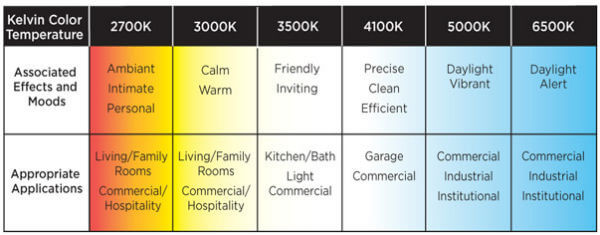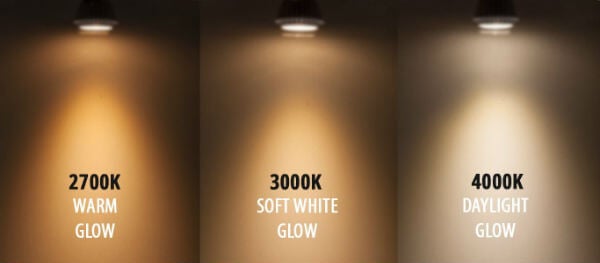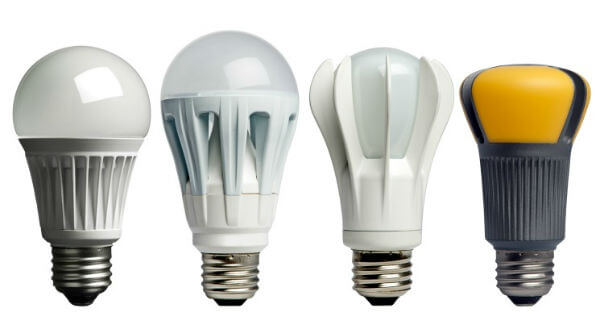Like the arrival of a new era, LED lamps have changed the entire scenario of the market offering something new and more than the previous lights. They have a low wattage allowing you to save a lot of energy, without making any cut in the light output. Available at an average cost of $2 to $25, they are the new rock stars of the light industry. You might still be using the old incandescent bulbs in your home or office, if yes, now is the time to cut your cost by installing the LED bulbs and minimizing the energy bill. Many organizations promote the usage of LED bulbs due to the properties of these bulbs impacting the environment less when they are being disposed of. These lamps are to help the people in saving money, energy as well as our environment. There are thousands of brands and models of LED lamps that are available in the market. This guide helps you to choose the right lamp with the right power with less money.
Life Span of LED
The life of LED lamp is rated to last for about tens of thousands of hours, in simple terms states that it can be used for decades. During the decades of use, the energy saved is uncountable. They rely on the diode, which is a simple electrical component that allows the movement of electricity to be in a single direction. Like the other bulbs, LEDs don’t burn out; they just slowly decrease their brightness over their long lifespan. Even the cheap LED bulbs have a life expectancy lasting up to 50,000 hours which is approximately 50% more than a commonly used incandescent bulb and about 20% more than a typical CFL. If a LED bulb states that it will last 50,000 hours, then technically it means the bulb will take 50,000 hours down to 70% brightness. If you are using a LED lamp for 10 hours a day, seven days a week, then 50,000 hours lifespan can work for 13.7 years with full brightness. Your investment will work for more number of days than expected.
LED Color Temperature
Higher the temperature of the LED lamp goes, the whiter and brighter it will be. The popular colors of the LED bulbs are ‘soft white’ or ‘warm white,’ ‘bright white,’ ‘coole white’ and ‘daylight.’ Image credit: www.westinghouselighting.com The light color is measured in Kelvins; the lower is the number yellower is the light. Soft White lights fell in 2700-3000 degree Kelvin where Day Light tone comes in a range of 6000-6500 degree Kelvin which resembles almost the tint of sunlight. Select the right color temperature that matches to your home furniture and wall color that help you to customize the mood of each room based on your requirement and taste.
Color of LED
The color temperature of the LED bulbs is different from traditional halogen bulbs and incandescent lights. There are several different colors of LED lamps available in the market like blue, white or yellow to match your needs. On the basis of their design, the colors of a LED lamp can be different needing no tints and filters. For the use in the indoor areas of the home and office, you can buy the LED color suiting the premises adding unique to the area.
Dimmable Lights & Smart Control LED Lamps
LED lamps are durable and low maintenance requiring bulbs as there is no filament or moving parts present in them. After their installation there is not much to be done, just put it and forget it, no need to check the bulb whatsoever. As they don’t even flicker when dimmed causing not much attention drawing towards them. There are easy dimmer control circuits that can use to dim the light without much effort or flickering like CFL lamps. Modern LED lights are equipped with smartphone controls that can change the color or the brightness remotely from smartphones.
LED Power Rating
It is the most important and essential thing that should be present in the electrical appliances to allow the user to save maximum amount. LED lamp’s power rating is way less than others using fewer watts per unit of light, it uses about 6-8 watts, as compared to 60 watts of an incandescent light bulb and 13-15 watts utilized by a CFL.
Image credit: www.nrdc.org This is almost 1/10 of power usage compared to the traditional incandescent lamp and half of the power consumption versus to a CFL lamp.
LED Light Intensity
For measuring the light intensity, one should be known about lumens. Lumen tells you the brightness of a bulb, regardless of the form of the lamp. The more the presence of lumens, the brighter the light coming from the bulb. A LED bulb has about 400-500 lumens (for 4-5 watts), which rises with the increase in watts of the Light Emitting Diodes (LEDs). A 25-28W LED provides you around 2600 to 2800 lumens or light output.
LED Type of Sockets
Although there are almost more than a hundred fittings for light are present, you can buy the one that you find suitable for the lamp holder and voltage rating for the country where you live. The ‘B’ is for Bayonett and ‘E’ is for Edison Screw allowing you to distinguish them easily. Usually, E27 is good for US standards with a 120V range where ‘B’ type holders are used with a 220-240V rating.
LED Lamp Voltage
The lamps are coming in different voltage rate based on the requirement. The voltage rate varies from 6V to 240V rate. Low voltage lamps are used in searchlights and vehicles where 120V to 240V LED bulbs are used for room lighting.
Shape of the Lamp & Direction of Light
The shape of the lamp is not just a question of liking the bulb’s look. The shape determines the style of your room and the holder. The LED lamps are coming in Omnidirectional, Flame tip, Flood reflector, etc. shapes to match your requirement. Image credit: www.energy.gov In addition to the variety of shapes, LED lamps are designed as spotlights those can generate a narrow beam of light instead of spread lights. When you see the shape of the bulb while purchasing them, please consider what you want the lamp to perform and in which the light holder it should go. Just a little bit of common sense is needed to understand the required shape of the light bulb. For example, you want wide-angle coverage, and then you can choose floodlights and A-line bulbs to fulfill this function. Featured image credit: baoshunled.wordpress.com It is important to have the right type of bulb for your home, to save the energy efficiently without any trouble. Wrong: Many studies have claimed and justified the fact that LED light bulbs can easily last up to five times longer than regular bulbs. Correct: the average incandescent bulb lasts 750 hours and while there are long life incandescents, they put out as little as 25% the light as the 750 hour bulbs. Non-dimmable LEDs last 10,000 hours or 13.3 times as long. Dimmable LEDs last 20,000 hours or just under 27 times as long. Furthermore LEDs are not damaged by “turn-on” shock so in cases were bulbs are turned on more frequently and for shorter periods of time, the LED benefit is even greater. Contradicting himself: The life of LED lamp is rated to last for about tens of thousands of hours Correct: he said above that they last “up to 5 times as long” which would be 5 times 750 or 3,750 hours and now tens of thousands of hours Wrong: They rely on the diode Correct: they rely on an electronic cicuit to both drop the voltage and convert from alternating to direct current. It is true that a diode is part of that circuitry but much more is included. Wrong: Like the other bulbs, LED lamps don’t burn out Correct: just like the other bulbs, LED lamps do burn out; it just takes longer. Usually the electronic circuitry fails long before the LED itself. Wrong: Even the cheap LED bulbs have a life expectancy lasting up to 50,000 hours which is approximately 50% more than a commonly used incandescent bulb and about 20% more than a typical CFL. Correct: now it contradicts almost everything he said earlier. Not 50,000 hours but 10,000 to 20,000. Must be new math that 10,000 is only 50% more than 750. As a typical CFL lasts 5,000 to 10,000 hours though by the end the light output may have dimmed by as much as 80%, not sure how that is only 20% longer than 750. To be fair, the LED component itself could theoretically last 50,000 hours or even longer; the electronic circuitry will fail long before then. Hence the 10,000-20,000 rating. Wrong: the energy saved is uncountable Correct: again this is simple arithmetic. To compare efficiency, the lumens per watt rating is the basis for the calculation. The most efficient bulbs are about 11 times more efficient than the most efficient incandescent bulbs. So Sam can’t divide by 11? Wrong: Higher the temperature of the LED lamp goes, the whiter and brighter it will be. Correct: whiter is true, brighter is false. Color temperature has nothing to do with brightness. Wrong: As they don’t even flicker when dimmed causing not much attention drawing towards them. Correct: it is true that few humans can see the flicker if viewed directly but many can see it if it is off axis. Cameras pick it up readily and they are unusable for video unless special circuitly is included inside the bulb. Some higher end LED bulbs as well as LED video lights include this circuitry. Incomplete: There are easy dimmer control circuits that can use to dim the light Complete: only true if dimmable bulbs are purchased, see the labeling on the package. It is possible but not recommended to put a non-dimmable bulb on a dimmer or automatic on-off control as the bulb can catch fire or burn out much sooner. Incorrect: as this article was written in 7/2017, the power consumption rating for a 1600 lumen LED is very high, instead of 19 watts Correct: it should be 13-14 watts depending on the brand. Of course one must read the labels on the bulb packages because there are LEDs that are no more efficient than CLFs. Incorrect: A LED bulb has about 400-500 lumens (for 4-5 watts), which rises with the increase in watts of the Light Emitting Diodes (LEDs) Correct: LED bulbs range from as little as 40 lumens/watt to as high as 110 lumens/watt. The output per watt doesn not increase as the bulbs get brighter, the reverse is usually true. A 28 watt LED typically produces 1,400-2,500 lumens. Notify me of follow-up comments by email. Notify me of new posts by email.
Δ








